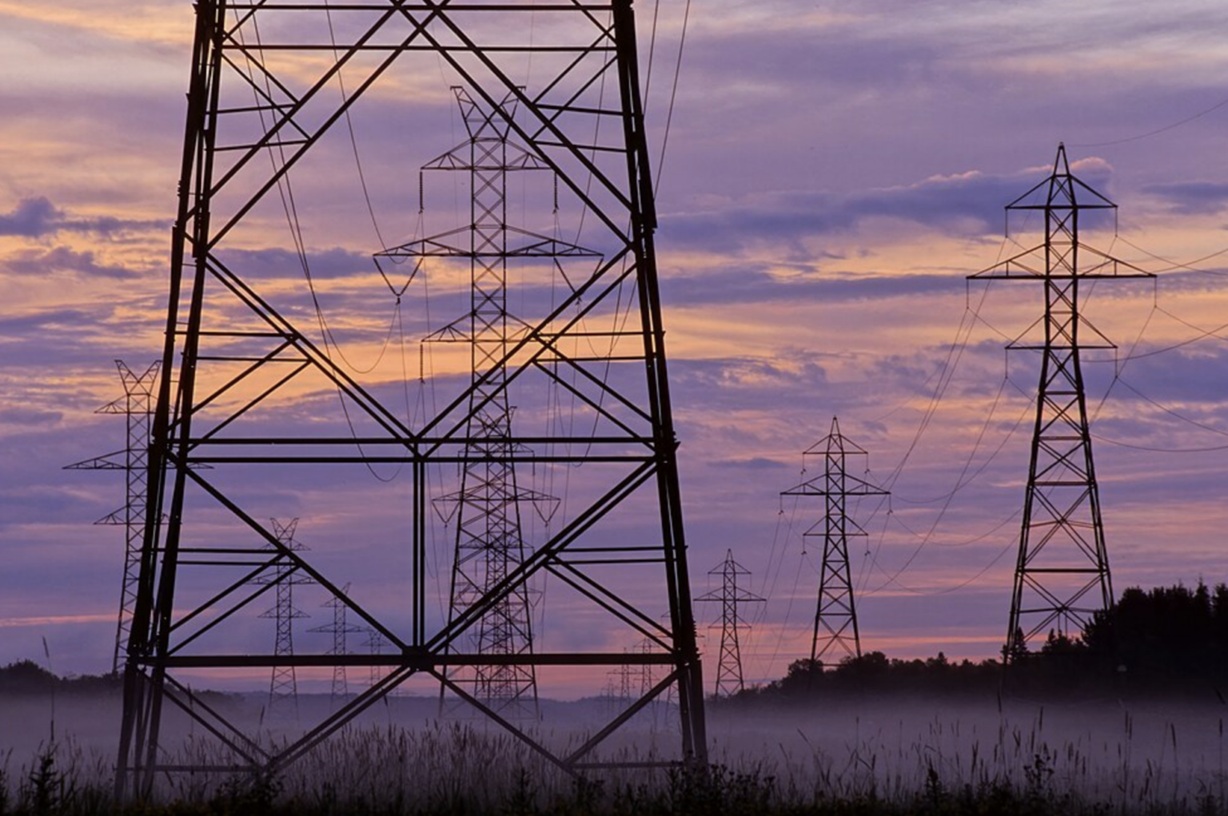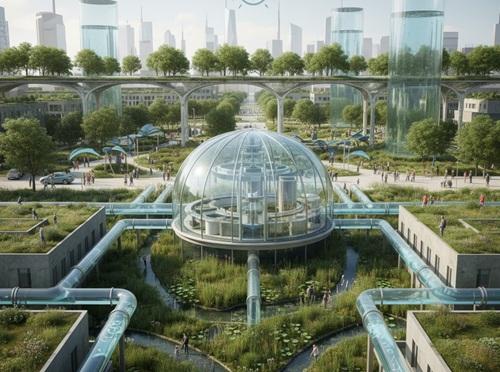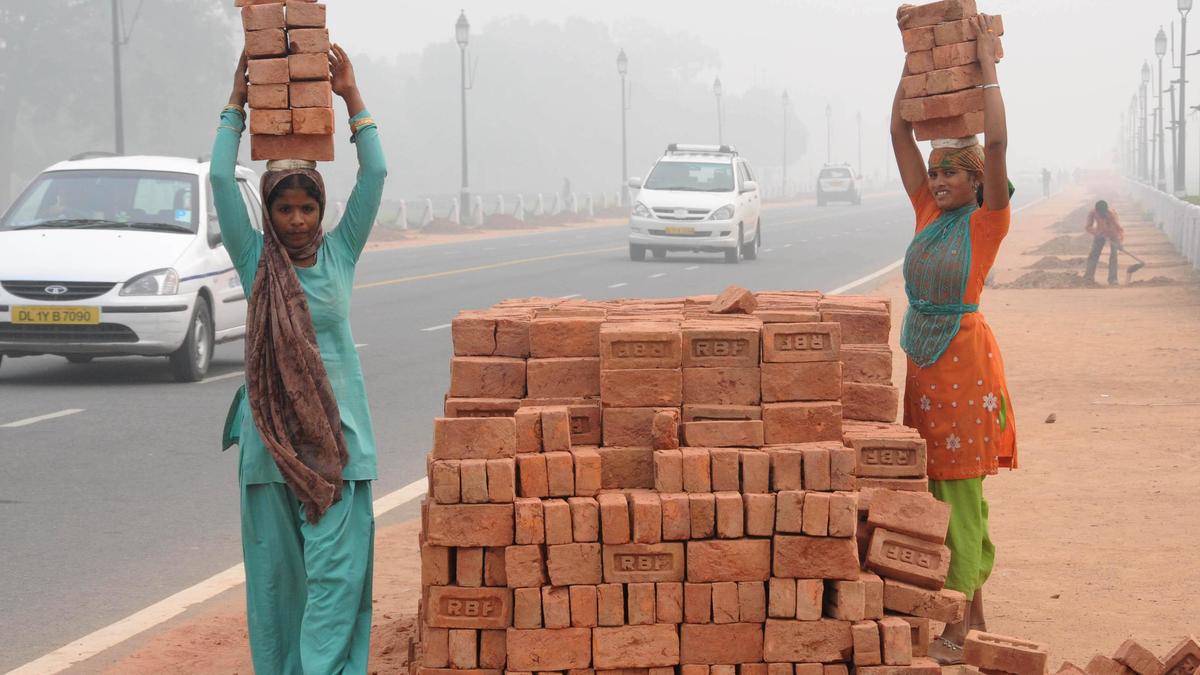Rebel Governance in an Age of Climate Change – New Security Beat

Report on Rebel Climate Governance and its Implications for Sustainable Development Goals
This report analyzes the growing phenomenon of environmental and climate governance by non-state armed actors in conflict-affected regions. It assesses the implications of this “rebel governance” for the achievement of the 2030 Agenda for Sustainable Development, with a particular focus on Sustainable Development Goals (SDGs) concerning climate, peace, and natural resource management.
The Intersection of Conflict, Climate, and Governance
Climate change is increasingly shaping the operational landscapes of armed non-state actors. In areas where state presence is weak or absent, these groups are engaging in environmental management and climate adaptation activities. This development presents a complex challenge to conventional models of peacebuilding and sustainable development.
Evidence of Rebel Environmental Governance
Recent research, including the Rebel Environmental Governance plus (REG+) dataset, indicates that nearly half of all rebel groups active since 1989 have engaged in some form of environmental governance. These activities directly impact the progress of several SDGs.
- SDG 15 (Life on Land): In Myanmar’s Kachin State, the Kachin Independence Organization (KIO) regulates timber harvesting and mining to conserve local ecosystems, directly addressing Target 15.2 on sustainable forest management. Similarly, Al-Shabaab in Somalia has banned charcoal production to combat deforestation.
- SDG 6 (Clean Water and Sanitation): The Taliban, even before regaining national power in Afghanistan, implemented water infrastructure projects, a critical component for achieving sustainable water management as outlined in SDG 6.
- SDG 13 (Climate Action): By managing natural resources, adapting crop patterns, and regulating land use, these groups are implementing localized climate adaptation strategies, which are central to SDG 13.
- SDG 16 (Peace, Justice and Strong Institutions): Rebel groups establish parallel systems of authority, including environmental ministries and regulations, which function as de facto institutions in contested territories, challenging the state-centric approach of SDG 16.
Strategic Motivations and Impacts on SDG Progress
The environmental actions of rebel groups are not altruistic but are strategic maneuvers to consolidate control, generate revenue, and gain local legitimacy. This dynamic has a dual impact on sustainable development.
Governance as a Source of Legitimacy and Control
By responding to environmental degradation and climate stress, such as droughts and agricultural collapse, armed groups can address local grievances and present themselves as more effective service providers than the state. This can bolster their influence but complicates efforts to build the legitimate, accountable state institutions envisioned in SDG 16.
Contributions and Hindrances to Local Resilience
While often coercive, rebel-led environmental policies can provide a degree of stability and support for civilian adaptation to climate change (SDG 13). However, these actions are often tied to extractive economies that may disrupt traditional livelihoods and are not aligned with long-term sustainable development, potentially undermining SDG 1 (No Poverty) and SDG 8 (Decent Work and Economic Growth).
Challenges for International Policy and the 2030 Agenda
The existence of rebel climate governance creates significant dilemmas for the international community and its efforts to implement the SDGs universally.
Implications for Global Partnerships (SDG 17)
Engaging with armed groups on climate and environmental issues poses a significant challenge. It risks legitimizing non-state actors and violating principles of state sovereignty. However, ignoring their role creates critical gaps in data and action.
- Data and Monitoring: Climate assessments that overlook rebel-held territories provide an incomplete picture of global climate risks and adaptation needs, skewing resource allocation.
- Humanitarian and Climate Finance: Aid agencies and climate funds face immense difficulty in reaching vulnerable communities in these regions, hindering progress on SDG 13 and the principle of “leaving no one behind.”
Policy Recommendations for Advancing SDGs in Contested Settings
Building climate resilience and achieving the SDGs in conflict-affected areas requires a pragmatic approach that acknowledges the complex reality of governance on the ground.
A Framework for Pragmatic Engagement
To effectively manage climate risks and support sustainable development in these environments, the following steps are recommended:
- Acknowledge the de facto governance role played by armed groups in environmental management to create more accurate assessments of local conditions and needs.
- Develop nuanced engagement strategies, often through local intermediaries and civil society, to support local resilience without directly legitimizing armed actors, thereby upholding the spirit of SDG 16.
- Invest in flexible and conflict-sensitive aid delivery and climate finance mechanisms that can operate effectively in contested territories.
- Rethink the distribution of international climate finance to ensure it reaches the most vulnerable populations, aligning with the core objectives of SDG 13 (Climate Action) and SDG 17 (Partnerships for the Goals).
Analysis of Sustainable Development Goals (SDGs) in the Article
1. Which SDGs are addressed or connected to the issues highlighted in the article?
-
SDG 13: Climate Action
The article is fundamentally about climate change, focusing on how different actors, including rebel groups, are engaging in “climate governance” and “shaping climate adaptation strategies” in response to “droughts, floods, and extreme heat.” It explores how communities “cope and adapt to climate change” in contested territories.
-
SDG 15: Life on Land
This goal is directly addressed through numerous examples of environmental management. The article discusses “deforestation linked to illegal logging and mining,” and actions taken by groups to “restrict timber harvests,” “regulate forest use,” “curb illegal logging,” “restore degraded landscapes,” and “conserve local ecosystems.”
-
SDG 16: Peace, Justice and Strong Institutions
The core theme of the article is “rebel governance” in areas where the state is “absent or weak.” It examines how non-state armed groups establish “systems of authority,” provide “public service,” and create “justice systems.” The entire discussion is framed within the context of conflict, “peacebuilding,” and the challenge this poses to conventional governance and state sovereignty.
-
SDG 6: Clean Water and Sanitation
The article mentions that rebel groups like the Taliban have been “implementing water infrastructure projects” and “building irrigation channels” as part of their governance activities, which directly relates to water resource management.
-
SDG 17: Partnerships for the Goals
The article discusses the implications of rebel governance for the “international community,” “aid agencies,” and “policy actors.” It calls for rethinking “how international climate finance is distributed” and for more “pragmatic approaches” that acknowledge the reality of governance in conflict zones, highlighting the need for new forms of partnership and engagement to achieve climate resilience.
2. What specific targets under those SDGs can be identified based on the article’s content?
-
SDG 13: Climate Action
- Target 13.1: Strengthen resilience and adaptive capacity to climate-related hazards and natural disasters in all countries. The article explains that rebel governance actions “support the coping and adaptation of civilians” and that these groups are involved in “shaping climate adaptation strategies” in response to environmental shocks.
-
SDG 15: Life on Land
- Target 15.2: By 2020, promote the implementation of sustainable management of all types of forests, halt deforestation, restore degraded forests and substantially increase afforestation and reforestation globally. The article provides direct examples of this, such as the KIO’s efforts to “restrict timber harvests,” the FARC’s involvement in efforts to “curb illegal logging,” and Al-Shabaab’s “bans on charcoal production.”
- Target 15.1: By 2020, ensure the conservation, restoration and sustainable use of terrestrial and inland freshwater ecosystems and their services. The article mentions that the KIO’s activities “serve to conserve local ecosystems” and that former FARC combatants are involved in initiatives to “restore degraded landscapes.”
-
SDG 16: Peace, Justice and Strong Institutions
- Target 16.6: Develop effective, accountable and transparent institutions at all levels. The article describes how rebel groups establish “systems of authority and public service provision,” including “environmental ministries,” which function as de facto institutions in areas where the state is absent.
- Target 16.7: Ensure responsive, inclusive, participatory and representative decision-making at all levels. The article notes that rebel governance is sometimes strategic to “win civilian support” and can respond to “local demands for environmental protection,” although it also highlights that this legitimacy is “precarious.”
-
SDG 6: Clean Water and Sanitation
- Target 6.5: By 2030, implement integrated water resources management at all levels, including through transboundary cooperation as appropriate. The article mentions the Taliban “implementing water infrastructure projects” and other groups “building irrigation channels,” which are forms of local water resource management.
-
SDG 17: Partnerships for the Goals
- Target 17.16: Enhance the Global Partnership for Sustainable Development, complemented by multi-stakeholder partnerships that mobilize and share knowledge, expertise, technology and financial resources, to support the achievement of the sustainable development goals in all countries, in particular developing countries. The article calls for the “international community” to adopt “pragmatic approaches” and rethink the distribution of “international climate finance” to effectively build climate resilience in conflict-affected areas, which implies a need for new partnership models.
3. Are there any indicators mentioned or implied in the article that can be used to measure progress towards the identified targets?
-
For SDG 15 (Life on Land)
The article implies indicators such as the rate of deforestation (by stating it has “surged” in Kachin State) and the implementation of policies to protect forests (by citing examples like “bans on charcoal production” and regulations on “timber harvests”).
-
For SDG 13 (Climate Action)
Progress can be measured by the number and scope of climate adaptation strategies implemented by local actors, as the article mentions groups are “shaping climate adaptation strategies” and “adapting crop patterns.”
-
For SDG 16 (Peace, Justice and Strong Institutions)
The article directly provides a quantitative indicator from the REG+ dataset: “nearly half of all rebel groups active since 1989 have engaged in at least one form of environmental governance.” Another implied indicator is the existence of non-state governance structures, such as the “environmental ministries” mentioned.
-
For SDG 6 (Clean Water and Sanitation)
An implied indicator is the number of water management projects completed in non-state areas, such as the “water infrastructure projects” and “irrigation channels” described in the text.
-
For SDG 17 (Partnerships for the Goals)
An implied indicator is the amount of climate finance reaching communities in rebel-held zones. The article highlights a gap by noting that funds “may never reach the communities most affected if those communities lie in rebel-held zones,” suggesting this flow of resources is a key metric.
4. Table of SDGs, Targets, and Indicators
| SDGs | Targets | Indicators |
|---|---|---|
| SDG 13: Climate Action | 13.1: Strengthen resilience and adaptive capacity to climate-related hazards. | Number and scope of climate adaptation strategies implemented (e.g., adapting crop patterns, building resilient infrastructure). |
| SDG 15: Life on Land | 15.2: Promote sustainable management of all types of forests, halt deforestation.
15.1: Ensure the conservation and restoration of terrestrial ecosystems. |
Rate of deforestation/reforestation.
Number of policies implemented to halt deforestation (e.g., bans on illegal logging and charcoal production). Area of degraded land restored. |
| SDG 16: Peace, Justice and Strong Institutions | 16.6: Develop effective, accountable and transparent institutions at all levels.
16.7: Ensure responsive and inclusive decision-making. |
Proportion of non-state armed groups engaged in environmental governance.
Existence of de facto governance structures (e.g., environmental ministries) in non-state-controlled areas. |
| SDG 6: Clean Water and Sanitation | 6.5: Implement integrated water resources management at all levels. | Number of water infrastructure projects implemented in contested areas (e.g., irrigation channels). |
| SDG 17: Partnerships for the Goals | 17.16: Enhance the Global Partnership for Sustainable Development. | Amount of international climate finance and aid successfully delivered to communities in conflict-affected and rebel-held zones. |
Source: newsecuritybeat.org

What is Your Reaction?
 Like
0
Like
0
 Dislike
0
Dislike
0
 Love
0
Love
0
 Funny
0
Funny
0
 Angry
0
Angry
0
 Sad
0
Sad
0
 Wow
0
Wow
0

























_1.png?#)






















































